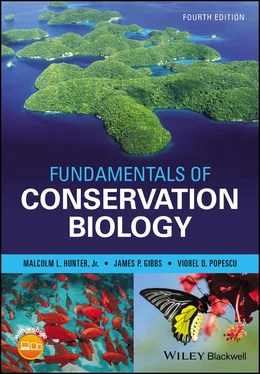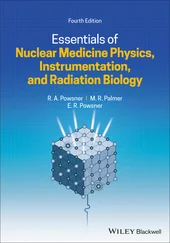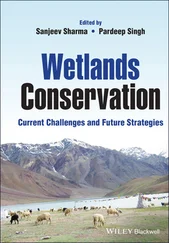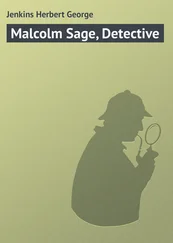Differences within a species can be of strategic value to conservation because they provide a clear justification for protecting a species across its entire geographic range, including all subspecies and major populations. For example, the Plymouth red‐bellied turtle is protected in the US state of Massachusetts. The one population that occurs in Massachusetts is slightly differentiated from other red‐bellied turtles (cooters) (Browne et al. 1996) so protecting it helps protect the entire suite of genetic variation found in the species. Protecting it also increases the entire species range by 30–40%, and doing so benefits a wide variety of other biota that also depend on the turtles’ wetland habitat. We will return to this issue in Chapter 13, “Managing Populations.”
Careful readers may wonder why we have departed from the taxonomy of values used for species and ecosystems: intrinsic, instrumental, and uniqueness. We could squeeze genes into this classification, but it seems a bit contrived to talk about intrinsic value and uniqueness of molecules. Although a DNA helix is conceptually a beautiful and inherently intriguing structure, the value of genes lies in what they do, rather than what they are, and in this sense all of their value is instrumental. The classification used here distinguishes between values that are important to the species itself (evolutionary potential and loss of fitness) versus those that are important to people and other species (utilitarian values).
Processes That Diminish Genetic Diversity
To better understand the relationship between reduction in genetic diversity and loss of fitness, we will now consider the processes that diminish genetic diversity, especially in small populations: genetic bottlenecks, random genetic drift, and inbreeding.
Some populations are quite large: thousands of individuals are loosely connected through a web of interbreeding that ensures gene flow throughout the population. On the other hand, some populations are quite small, perhaps because they are confined to tiny, isolated patches of habitat and have limited dispersal abilities. In this section we are primarily concerned with what can happen to the genetic diversity of small populations, especially among species that typically occur in large populations but have been forced into small numbers. Profound changes occur in reduced populations and thus management of small‐population phenomena is a major focus for conservation biology.
Populations become small for a variety of reasons. Sometimes, large populations experience a catastrophe such as a hurricane and collapse to a few remnant individuals. Sometimes, a few individuals arrive in a new area and establish a new population that is inevitably small at first; this is called a founder event . When a population collapses or a new population is established, the genetic diversity of the original larger population is likely to be reduced because only a sample of the original gene pool will be retained. Returning to the bison example, if you start with a population of 1000 bison with 2000 alleles for MDH‐1 and reduce it to 50 bison, only 100 alleles will remain. Moreover, the remaining sample is not likely to be representative of the original population. This phenomenon is called a genetic bottleneck . Passing through a genetic bottleneck can create two problems: (1) a loss of certain alleles, especially rare alleles; and (2) a reduction in the overall amount of genetic variation. For example, a population that ranged across a continuum from very dark individuals to very light individuals might, after a bottleneck, have only intermediate colored individuals or only dark or only light individuals (Frankel and Soulé 1981), posing problems for future fitness.
The proportion of genetic variation and number of alleles likely to be retained after a bottleneck can be estimated using the formulas presented in Table 5.2. From this table we can see that most of the genetic variation is retained even in a tight bottleneck, 95% with just 10 individuals. The situation is worse, however, for retention of uncommon alleles. In this example, 10 individuals are likely to retain only two of four alleles if three of the alleles were uncommon (2% each of all the alleles). This figure improves to an estimate of 3.63 alleles retained if the alleles are more common, 10% of the total in this example. Genetic data from the whooping crane illustrate this phenomenon: six genotypes were detected in a sample of old museum specimens, but only one of these persists in the modern population after a 1938 bottleneck in which only 14 adults survived (Glenn et al. 1999). A study by Bouzat et al. (1998) of greater prairie chicken microsatellite variation provides another example. Birds in Illinois, which remain only in very small populations, have just two‐thirds as many alleles as those from neighboring states with much larger populations, and many fewer than museum specimens collected before 1960 when the severe population decline began.
Table 5.2 Proportion of genetic variation remaining after a genetic bottleneck.
Based on Frankel and Soulé 1981
|
|
Average number of alleles retained from an original set (m) of 4 |
| Sample size ( N ) after bottleneck |
Proportion of heterozygosity retained |
p 1= 0.70, p 2= p 3= p 4= 0.10 |
p 1= 0.94, p 2= p 3= p 4= 0.02 |
| 1 |
0.50 |
1.48 |
1.12 |
| 2 |
0.75 |
2.02 |
1.23 |
| 6 |
0.917 |
3.15 |
1.64 |
| 10 |
0.95 * |
3.63 |
2.00 † |
| 50 |
0.99 |
3.99 |
3.60 |
| ∞ ‡ |
1.00 |
4.00 |
4.00 |
*Retention of heterozygosity is approximately equal to 1 − 1/(2 N ), where N is the population size after the bottleneck. If a population crashed to 10 individuals, about 1 − ½(10) = 1 − 0.05 = 0.95 of the genetic variation of the original population would remain.
†The formula for estimating how many alleles would remain after a bottleneck is E = m − ∑ j(1 − p j) 2N ,where m is the number of alleles before the bottleneck, p is the frequency of the j th allele, and N is the population size after the bottleneck. From an original set of four alleles the remaining number would be
4 − ∑ (1 − 0.94)20 + (1 − 0.02)20 + (1 − 0.02)20 + (1 − 0.02)20 =
4 − ∑ 0.0620 + 0.9820 + 0.9820 + 0.9820 =
4 − ∑ ~0 + 0.666 + 0.666 + 0.666 = 2
‡With a population of infinite size no genetic bottleneck occurs.
A genetic bottleneck is the outcome of a process known as random genetic drift, a process similar in concept to sampling error that you may be familiar with from introductory statistics. Genetic drift is an erratic change in gene frequencies that is likely to occur in small populations because each generation retains just a portion of the gene pool of the previous generation (Frankel and Soulé 1981 ; Hartl and Clark 1997). It is like sampling error because the genetic diversity “sampled” by the few survivors may not be representative of the population as a whole. Table 5.3presents a formula for estimating the implications of random genetic drift for genetic diversity. The formula is identical to the one for estimating the loss of genetic variation in a bottleneck, with an exponent added to represent the number of generations that a population has continued to remain small. In other words, random genetic drift is the same thing as passing through a genetic bottleneck except that the bottleneck usually lasts multiple generations (compare column 2 in Table 5.3with column 2 in Table 5.2).
Читать дальше












